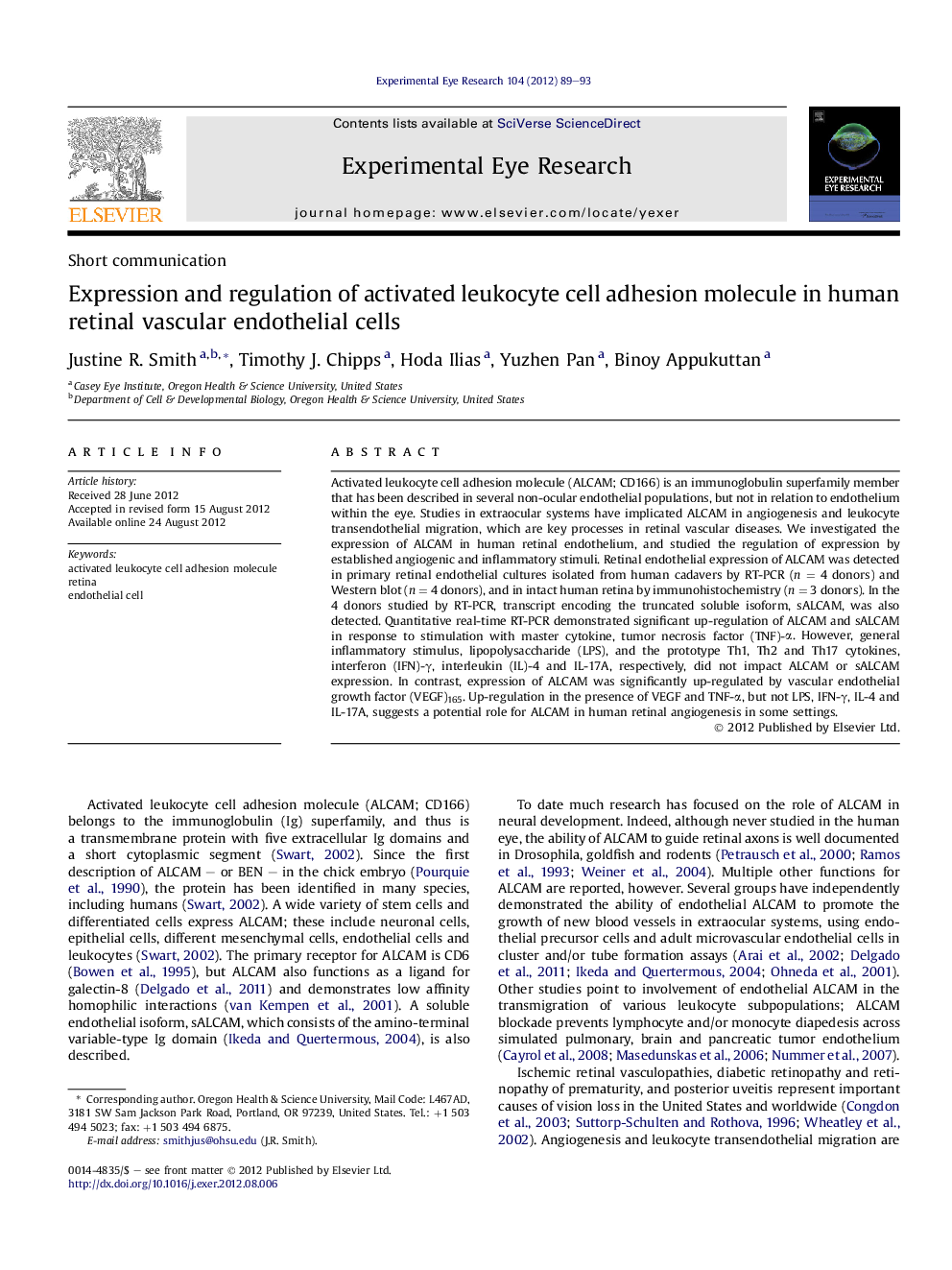| Article ID | Journal | Published Year | Pages | File Type |
|---|---|---|---|---|
| 6197355 | Experimental Eye Research | 2012 | 5 Pages |
Activated leukocyte cell adhesion molecule (ALCAM; CD166) is an immunoglobulin superfamily member that has been described in several non-ocular endothelial populations, but not in relation to endothelium within the eye. Studies in extraocular systems have implicated ALCAM in angiogenesis and leukocyte transendothelial migration, which are key processes in retinal vascular diseases. We investigated the expression of ALCAM in human retinal endothelium, and studied the regulation of expression by established angiogenic and inflammatory stimuli. Retinal endothelial expression of ALCAM was detected in primary retinal endothelial cultures isolated from human cadavers by RT-PCR (n = 4 donors) and Western blot (n = 4 donors), and in intact human retina by immunohistochemistry (n = 3 donors). In the 4 donors studied by RT-PCR, transcript encoding the truncated soluble isoform, sALCAM, was also detected. Quantitative real-time RT-PCR demonstrated significant up-regulation of ALCAM and sALCAM in response to stimulation with master cytokine, tumor necrosis factor (TNF)-α. However, general inflammatory stimulus, lipopolysaccharide (LPS), and the prototype Th1, Th2 and Th17 cytokines, interferon (IFN)-γ, interleukin (IL)-4 and IL-17A, respectively, did not impact ALCAM or sALCAM expression. In contrast, expression of ALCAM was significantly up-regulated by vascular endothelial growth factor (VEGF)165. Up-regulation in the presence of VEGF and TNF-α, but not LPS, IFN-γ, IL-4 and IL-17A, suggests a potential role for ALCAM in human retinal angiogenesis in some settings.
